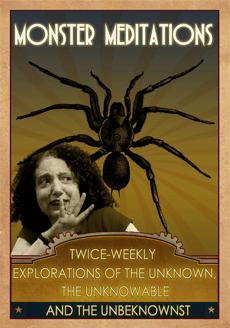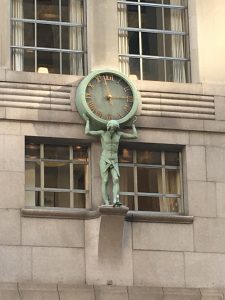One summer when I was still in college, I took a class on screenwriting in the film school at NYU. I learned a great deal—most of all I learned that screenplays are not a natural storytelling format for me. I’ve tried a few times since then and will likely try again, but I would rather infuse the visual narrative and scene-by-scene progression of a screenplay into my short stories & novels.
One thing that fascinated me then—and continues to intrigue me—is the idea of a temporal ellipsis. The usual dictionary definition of an ellipsis is: the omission from speech or writing of a word or words that are superfluous or able to be understood from contextual clues. A temporal ellipsis is the compression of time that eliminates superfluous scenes in a movie (or story).
That summer, so long ago, I remember playing with the idea of a screenplay exploring all the gaps that we accept in visual storytelling (film, TV). A show that includes too many superfluous scenes of transition—parking the car, the entire walk home, the hour-long exam in school, etc.—drags.
My recent bout with the flu, led me to binge watch Julian Fellowes’ new series ‘Doctor Thorne’ (based on the Trollope novel). Watching the episodes with minimal breaks, I began to note how the constant carriage rides were slowing down the action.
I have no trouble with a leisurely pace, but all the carriages, viewed at a distance, were starting to look the same and I began to muse on how production costs were reduced by spending a day shooting the back of one carriage, with one set of occupants from a distance, and recycling bits and pieces of the footage. That fact that I was noticing this—when my brain was foggy with a fever— was telling. A quick cut to a temporal ellipsis would have gotten the characters to their destinations without the repetition.
Hitchcock’s famous experiment with ‘real time’—no quick cuts, no time compressed or even trimmed—‘Rope’ is worth checking out. The movie, based on the infamous murder case of Leopold & Loeb, plays out in real time—not an easy feat. As each reel of film ends, there’s a close up on an inanimate object (something that can sit still the way a person cannot) so that the transition to a new reel can be seamless. As viewers take gaps in time for granted in film, it give ‘Rope’ an extra dose of uneasy mystery.
In live theater, a temporal ellipsis is more likely to be a gap in time between acts. The Pulitzer price winning play ‘Clybourne Park’ by Bruce Norris, is the perfect example of this kind of temporal ellipsis. Both acts take place in the same home, Act One in 1959 when the neighborhood is on the verge of integration, and Act Two fifty, years later when the African-American neighborhood is attracting white gentrification. Race relations, class, money and real estate in 1959/2009… The time jump lets the playwright explore it all.






I had no idea the concept of a temporal ellipsis even existed, but now it seems obvious. 🙂
We use it too, perhaps without being aware of it. I know I use scenes, chapters and ‘Parts’ as ways to move time along without having to resort of dates or clock time [although I do use those as well, but sparingly].
It’s interesting how movies have actually educated readers in some of these devices.
Film just spells it out, but it’s always been part of storytelling. We might tell an anecdote about a child as an introduction to a story about the individual as an adult. The device is intuitive in fiction. It’s an interesting concept to contemplate when trying to speed up the pace of a story. We’re far from the days when Charles Dickens was paid by the word and wanted to have chapter after chapter to keep the story going.
Food for thought! And thanks for reminding me about Rope – definitely need to rewatch it. Those ellipses in storytelling can be a major pain in the butt – I always struggle with my scene changes.
Sometimes it helps to imagine your novel as a movie, but sometimes… that just makes me crazy!
Yes, the jumps in time, the ‘quick cuts’ to another scene, etc. are all the visual language of cinema. Of course they start on the script page, were sourced or inspired by the visual storytelling in novels & stories, and were born around a camp fire eons ago, when the storyteller said, “And then they traveled to…” OR “And time passed…”